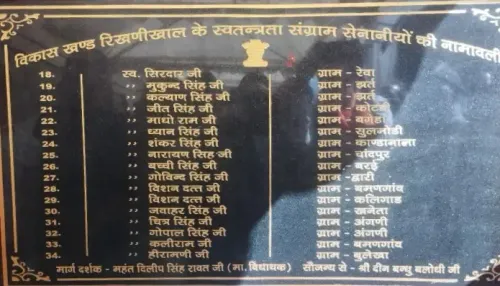What Changes Are Sweeping Through Bihar With the Transfer of 47 IAS Officers?

Synopsis
Key Takeaways
- 47 IAS officers transferred in Bihar.
- Includes key roles such as District Magistrates.
- The reshuffle aims to enhance governance.
- Strategic moves ahead of upcoming elections.
- Experienced officers placed in crucial positions.
Patna, May 31 (NationPress) In a significant bureaucratic shake-up in Bihar, the state administration has transferred 47 IAS officers, which includes District Magistrates (DMs) from numerous vital districts.
A formal announcement regarding this was made by the General Administration Department on Saturday.
This reshuffle affects nearly every district in Bihar, notably impacting the state capital, Patna.
Chandrashekhar Singh, who previously served as the DM of Patna, has been promoted to the Commissioner of Patna Division.
A 2010-batch IAS officer, Singh had a substantial tenure as the Patna DM and was recognized for his consistent administrative performance in the capital.
Tyagarajan S.M., the existing DM of Gaya, will now take on the role of Patna DM. As a 2011-batch IAS officer, he is well-regarded for his administrative skills in the Gaya district.
Rajiv Roshan, the DM of Darbhanga, has been appointed as the Commissioner of Saran Division.
Koshal Kishore, who was the Director of ICDS, will now become the Commissioner of Darbhanga Division.
Avanish Kumar Singh, DM of Munger, has been elevated to the Commissioner of Munger Division.
Raj Kumar, the previous Managing Director of COMFED, has been assigned as the Commissioner of Tirhut Division.
Himanshu Kumar Rai, a 2010-batch IAS officer and special secretary in the planning and development department of Bihar, will now serve as Commissioner of Bhagalpur Division.
Navin Kumar, a 2011-batch IAS officer, formerly the commissioner of the state transport department, has been appointed as the DM of Khagaria.
Kaushal Kishore, a 2012-batch IAS officer who was serving as the DM of Supaul, has been transferred to the DM position in Darbhanga.
This administrative restructuring is perceived as a strategic initiative by the Bihar government to position experienced officers in crucial roles as the political scene intensifies in the state, particularly with elections on the horizon.









